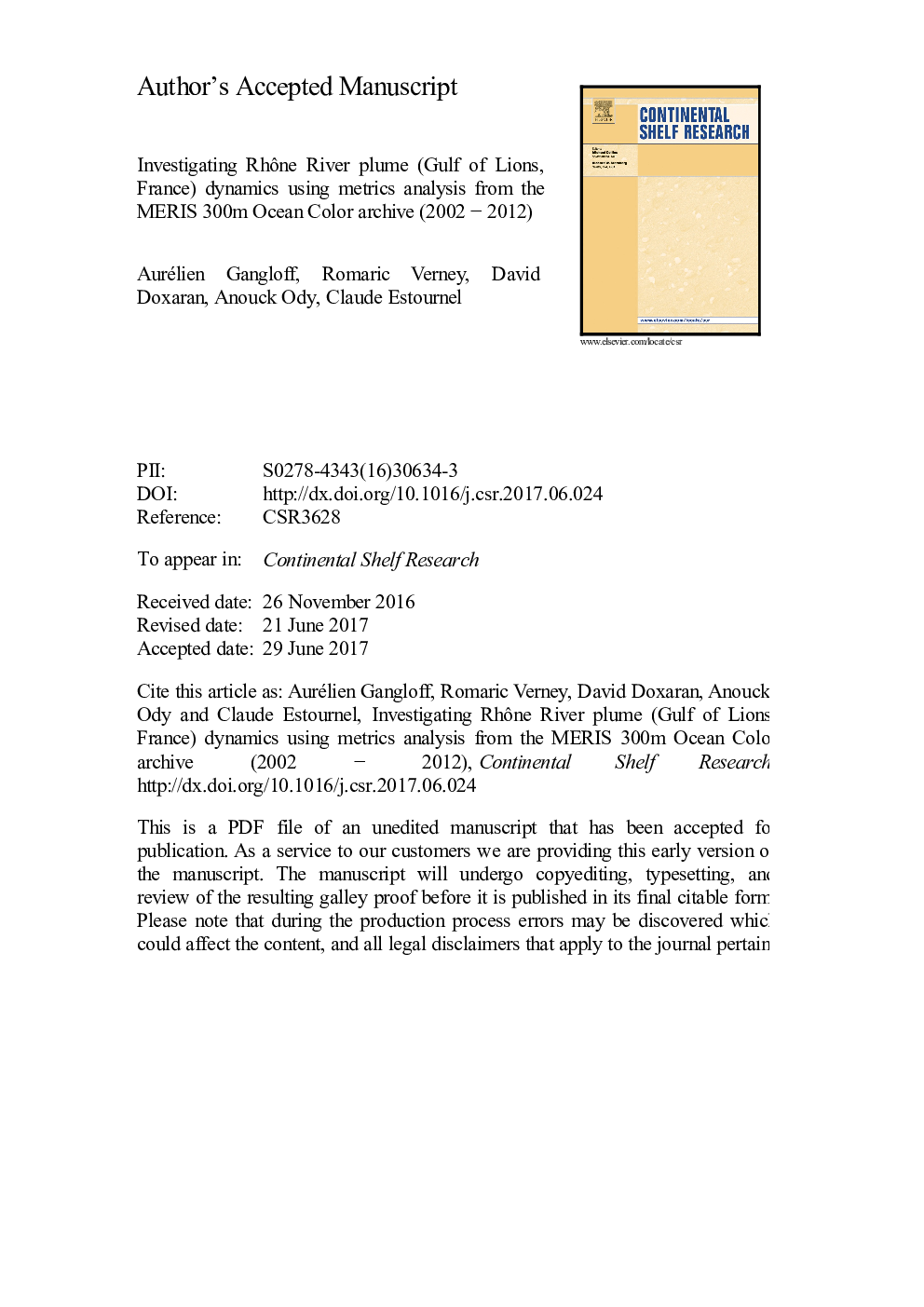| Article ID | Journal | Published Year | Pages | File Type |
|---|---|---|---|---|
| 5764455 | Continental Shelf Research | 2017 | 35 Pages |
Abstract
In coastal environments, river plumes are major transport mechanisms for particulate matter, nutriments and pollutants. Ocean color satellite imagery is a valuable tool to explore river turbid plume characteristics, providing observations at high temporal and spatial resolutions of suspended particulate matter (SPM) concentration over a long time period, covering a wide range of hydro-meteorological conditions. We propose here to use the MERIS-FR (300m) Ocean Color archive (2002-2012) in order to investigate Rhône River turbid plume patterns generated by the two main forcings acting on the north-eastern part of the Gulf of Lions (France): wind and river freshwater discharge. Results are exposed considering plume metrics (area of extension, south-east-westernmost points, shape, centroid, SPM concentrations) extracted from satellite data using an automated image-processing tool. Rhône River turbid plume SPM concentrations and area of extension are shown to be mainly driven by the river outflow while wind direction acts on its shape and orientation. This paper also presents the region of influence of the Rhône River turbid plume over monthly and annual periods, and highlights its interannual variability.
Related Topics
Physical Sciences and Engineering
Earth and Planetary Sciences
Geology
Authors
Aurélien Gangloff, Romaric Verney, David Doxaran, Anouck Ody, Claude Estournel,
